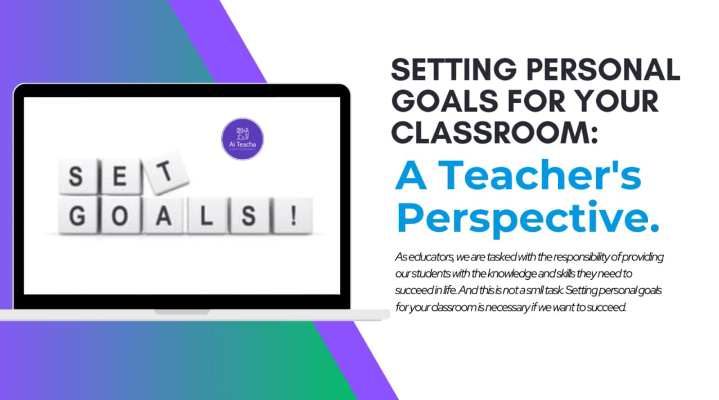
Introduction
Teaching is a noble profession that involves shaping young minds and nurturing future generations. To excel in this role, educators must constantly strive for improvement and innovation. One powerful way to do this is by setting personal goals for your classroom.
In this blog post, we will explore the importance of setting personal goals as a teacher, how to establish effective goals, and how they can positively impact both educators and students.
The Importance of Setting Personal Goals
As educators, we are tasked with the responsibility of providing our students with the knowledge and skills they need to succeed in life. And this is not a small task. Setting personal goals for your classroom is necessary if we want to succeed.
1. Continuous Improvement: Goal-setting generally encourages growth and development. And it is not different in teaching. It helps teachers stay current with best practices, strategies and trends.
2. Positive Learning: When teachers have a clear sense of purpose and direction, it positively impacts the teaching-learning process.
3. Improved Student Outcomes: Effective goal-setting lead to improved student outcomes. We know what we want to achieve with each student and track our success rate, with goals settings.
4. Accountability: Personal goals help teachers remain accountable. By setting measurable objectives, they can assess their progress and make necessary adjustments.
How to Establish Effective Classroom Goals
1. Identify Areas of Improvement:
The first step to success is identifying areas that need improvements. Begin by identifying specific areas in your teaching that require improvement. These could be related to classroom management, teaching methods, assessment, time management, organization or even communication with parents.
2. Create Smart Goals:
Ensure that your goals are specific and measurable. For example, instead of setting a vague goal like "Improve classroom management," you can specify, "Reduce disruptions during class by 30% this term. Make sure it is realistic and has a timeline.
3. Monitor Progress:
Regularly monitor your progress towards achieving your goals. Keep a journal or use a tracking system to record your successes and challenges. This data will help you make necessary adjustments.
4. Ask for Support and Feedback:
Don't be afraid to seek support and feedback from colleagues, mentors, or professional development opportunities. This will help you fast track your improvements.
These points are quite limited. To get more valuable action points, you can download the FREE EBOOK; How To Become A Proactive Learner by Lavinia Mehedintu via the link; https://icedt.org/resources-detail.php?r_id=152
Conclusion
Setting personal goals for your classroom is a powerful tool for continuous improvement and enhanced student learning. By establishing specific, measurable, and achievable goals, monitoring our progress, and seeking support when needed, we can create a positive, enriching environment that benefits both ourselves and our students.
Do you have personal Classroom goals?
How do you keep track of them?
Follow us on any of our social media handles to share your experiences;
Facebook: https://www.facebook.com/icedtonline
X (Twitter): @Icedtonline
Instagram: @icedtonline1
Choose a membership plan that'... Read more
Inspiring learning experiences on... Read more
Join the latest discussions and b... Read more
Don't miss ICEDT Community an... Read more
Enjoy edtech experts' mentors... Read more
Download cutting-edge re... Read more
© 2024 International Community for Educational Technology. All rights reserved.
Don't have an account? Create your account. It takes a few minutes!
Don't have an account? Create your account. It's take less then a minutes